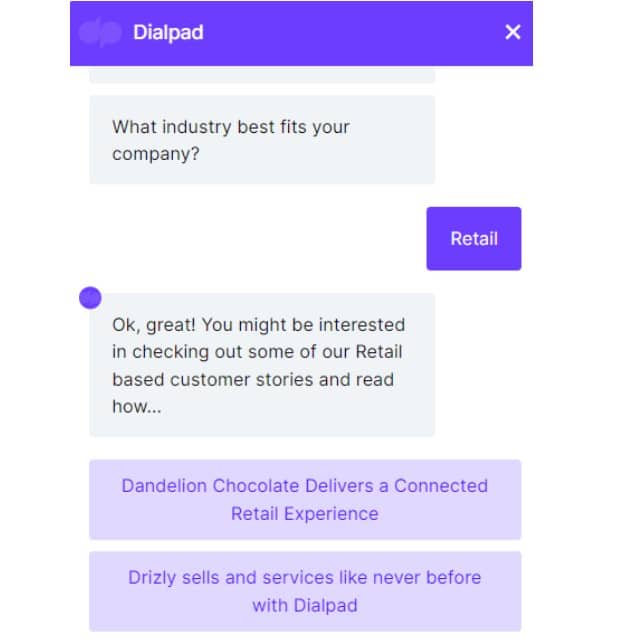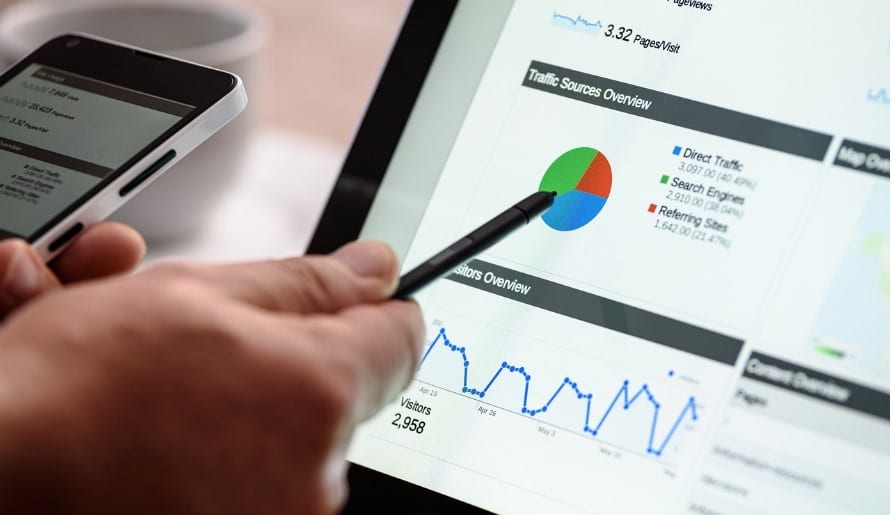While there’s no magic formula to win new clients, there is one easy way to know what your audience is thinking: customer feedback.
There’s a reason brands are increasing their investment in customer feedback. Asking for and analyzing it provides valuable insights for businesses. With consumer expectations at an all-time high, this feedback lets you know where to focus your attention. And that means you can create more targeted PR strategies to reach the right people—potential customers.
In this guide, we’ll examine what customer feedback is, why you should analyze it, and what methods you should use to obtain it.
Understanding customer feedback analysis
Customer feedback analysis is the practice of collecting, organizing, and interpreting comments left by customers for your products or services in order to make data-driven decisions. This can include any reviews and surveys, or customer research conducted by your business.
The way your organization analyzes customer feedback will depend on how you’ve sourced feedback and the volume you have received. For example, you’ll need to dedicate more hours to analyzing reviews left by voicemail through contact center systems than surveys collected via email that can be automatically collated with specialist survey software.
You can also expect different results from feedback depending on how it was collected. Polls and quizzes can be great ways to collect quick honest feedback from your customers, but you’ll sacrifice detailed answers. By contrast, by setting up private communities for your customers (like closed Facebook groups) you’ll likely gather more detailed responses and build relationships through personal interactions with your customers.

Why you should analyze customer feedback
There are a number of reasons why customer feedback analysis should be a crucial practice for your business and a key element of any enterprise risk management framework. Feedback analysis helps companies prepare for potential hazards and sets them up to meet their objectives.
-
Identify areas for improvement
One of the main reasons for gathering customer feedback is figuring out how to improve. There are many things that may be obvious to the customer that you haven’t considered. For instance, you might have set up your online checkout to enable international delivery, but forgotten to allow for international characters.
This could lead to a bad user experience, but if you regularly check in with your customers, it could be a quick fix rather than a major problem.
Gathering constructive criticism provides actionable insights that’ll have big effects on the overall customer experience.
-
Monitor customer satisfaction and loyalty
Customer feedback surveys are a valuable metric for understanding customer satisfaction and, in turn, customer loyalty. With surveys and other forms of feedback, you can gauge customer expectations and the extent to which you are meeting them. By staying on top of it, you can notice if there is a sudden increase in negative feedback, and make appropriate changes before you start losing customers.
-
Promote innovation
When done correctly, feedback analysis can be a really useful tool for highlighting areas for innovation. You might spot unexplored opportunities and gaps in the marketplace, or notice a trend that points to an unmet need. The more feedback collected, the more likely you are to stay ahead of the competition by tapping into what your audience wants.
-
Strengthen customer relationships
Ultimately, customers notice when they’re being listened to. When you collect their feedback and act on their suggestions, you’re demonstrating that you value them. This helps to forge a sense of trust, provide outstanding customer experience, and build strong customer relationships. Loyal customers feel like they are contributing to your brand and are involved in shaping the products that they purchase.
-
Drive your PR strategy
Once you’ve collected and collated significant amounts of surveys, feedback emails, reviews, and so on, you’ve got a goldmine of data waiting for you. You can use this data to drive a more targeted PR strategy towards the right consumers for your product. Existing customers who left positive feedback can show you where to reach people with similar interests – for instance, the social media they use, where they shop, and what kind of marketing strategies appeal to their demographic.
This targeted approach can not only attract new customers but also strengthen customer loyalty among your existing ones.

5 top methods for obtaining and analyzing customer feedback
We’ve already mentioned a few sources of feedback, like surveys and reviews, but what are some of the best places to gather feedback? And, once you’ve gathered it, how do you analyze it? You want to be able to spot common themes, gather meaningful insights, and ultimately, come away with a deeper understanding of what your customers think.
1. Surveys and quizzes
Sending customer surveys directly to the people you want to hear from is an efficient way to obtain feedback for analytics. The best ones will contain a mix of quick, numerical questions (for instance, ‘rate your experience on a scale from 1 to 5’) and open-ended questions for more detailed responses.This combination means you can collect a mix of quantitative and qualitative feedback.
Once you’ve collected the responses, consider the best ways to categorize feedback. This might be looking for a particular product feature that keeps cropping up in responses, or by separating them into positive and negative responses. Once you’ve done this, survey analysis software can help to calculate metrics like customer satisfaction scores (CSAT) or highlight particular trends to be aware of.
2. Social media tools
Social media is an effective and engaging way to collect customer feedback. While simply having a profile somewhere will lead to customers communicating with you, it’s worth implementing some dedicated strategies.
Hashtags are a good place to begin because they can be implemented quickly. Adding a hashtag for particular products or services will help you keep track of and monitor when your customers are discussing it. You can even track them across multiple platforms.
Direct messages can be another way to engage with customers and collect feedback. Once you’ve noticed a customer has shared negative reviews or praise for your brand, get your customer support team to reach out privately and ask for more detailed feedback.
Finally, social media listening and monitoring tools can be used to find out what customers are saying about your business online. Media monitoring software will follow conversations and keywords related to your business. They may even send you alerts when terms relevant to your business are mentioned online.
3. Live chat and customer service calls
Providing customer service options like hotlines and live chats works twofold. Firstly, to show that customer focus is one of your business priorities, and secondly, to gather useful data related to customer experience. Live chat logs can be used as a quick data gathering tool, asking pre-written questions on demographic information or what a customer is looking for.

Screenshot from Dialpad
Both live chat logs and call recordings can also be a useful resource for methods of machine learning like sentiment analysis – AI can scan conversations and can gauge the emotion and tone of feedback. This is an efficient way of understanding the broad sentiment of customers and categorizing their calls.
Be ready to employ call center retention strategies and implement the best technology in order to help your customer service team excel at this method.
4. Customer reviews and text analytics
Rather than passively waiting for online reviews to come in, you can send review requests once a purchase has been made from your website and track email and SMS communications to see if customers have completed them. Tracking emails themselves is also a useful strategy for optimizing your PR. From here, you’ll see which customers are most likely to open communications from you, and even what devices they’re using.
Online reviews are a valuable source of customer feedback that should not be overlooked. Analyzing online reviews alongside other forms of feedback can help you gain a comprehensive understanding of customer sentiment and identify areas for improvement.
Once you’ve collected consumer feedback, text analytics can do the rest of the work. Advanced tools can uncover specific patterns in your data, identify keywords, and even spot recurring issues and topics that are raised.
5. Machine learning and AI
Thanks to recent innovations like machine learning and artificial intelligence, it’s never been easier to obtain and analyze customer feedback.
Tools like AI can automate the feedback and analysis process while also minimizing human errors and ensuring the most value is drawn from the data. They’ll also highlight patterns between various data sources across platforms and in different mediums, all in one place. For example, from AI customer experience examples like live chat logs, call recordings, and email surveys.
Businesses can also use predictive analytics machine learning tools to enhance customer experiences and improve their PR strategies. This might be by suggesting products based on a customer’s purchase history, through app-location tracking, or because of spending habits.

Leverage your customer feedback for a targeted PR strategy
With a range of options available when it comes to collecting and collating feedback from customers, there are methods to suit every organization – no matter the time or budget available. Whichever you choose, they can be leveraged to make informed decisions about your PR for a more targeted and efficient strategy.
Customer feedback analysis is an ongoing process, and it requires some commitment and adaptability. As your business needs change, you’ll want to prioritize different avenues for feedback and different focuses for research. Maintaining flexibility will ensure that you’re keeping up to date with your changing customer base and staying one step ahead of their evolving demands.








